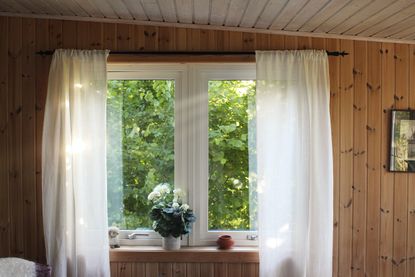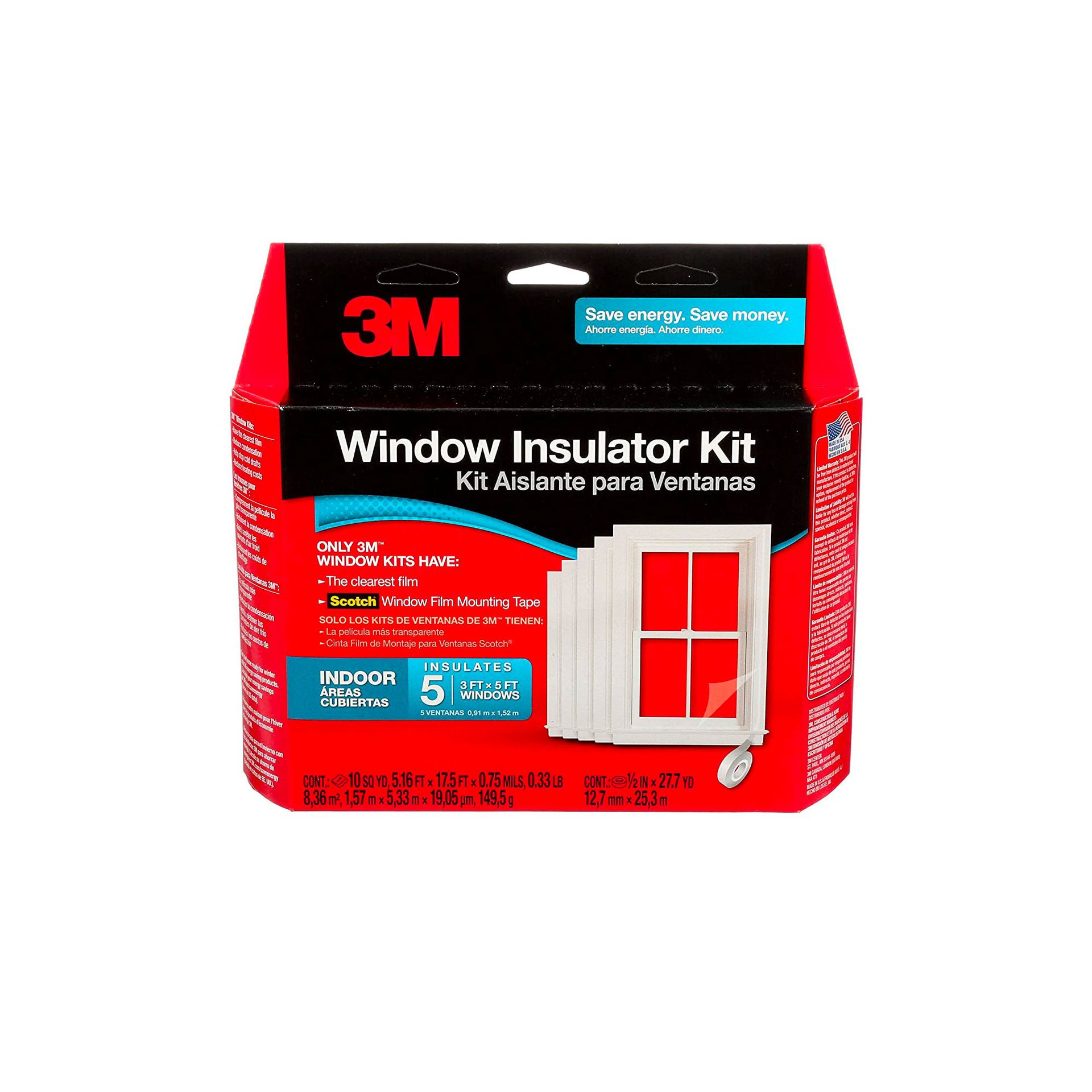No one likes drafty windows — no matter what season. If yours are old (or new) and bring cold air into your home, rest assured that there are a few quick fixes to stop that breeze in its tracks and to stop your energy bills from going through the roof.
It can depend on the types of windows you have, but usually, the problem stems from old fittings which crack and lose their quality over time. It's normal wear and tear, but that's not to say that you should ignore it or replace your windows immediately.
"Drafty windows allow warmed-up or cooled air to escape your home while giving way to outside temperatures," says Dominique Kemps, CEO and founder of The Glassperts (opens in new tab). "This defect appears around the outside edge of the window frame, where panes of glass overlap, move, or open. For example, you heat your house with your heating system, but when you walk past some windows, you feel a certain chill. This cold air is probably a draft coming from a separate window."
How to fix a drafty window
Thankfully there are lots of quick drafty window fixes you can try that are all pretty budget-friendly, too.
1. Caulk the gap
Caulking is a quick and fuss-free way of filling any gaps between window sashes and the frame itself. It's one of the best options if you're wondering how to insulate windows. Mold rope caulk inside and out the window for maximum effect.
"Caulk is a flexible, waterproof sealer that comes in a disposable cartridge," says David Flax, VP of Operations at Window Genie (opens in new tab). "Various types of caulk are available, so make sure you read the packaging carefully. Apply the material in a straight, continuous line to fill any gaps around your windows and doors."

2. Refresh glazing putty
Windows can work efficiently for years, but if the glazing putty seal is cracked, they won't be doing their job properly. Redoing the glazing putty is an easy DIY. All you need is a heat gun, putty knife, utility knife, caulk, and glazing putty. You'll want to wear gloves and carefully heat the old putty, scraping it off. Then add the new glaze following the manufacturer's instructions as this may change depending on whether yours is oil or latex based. Glazing points can help to hold the glass in place as the putty dries.
3. Add in weatherstripping
Adding weatherstripping to the sides of window sashes can help fix drafty windows if your home insulation isn't working as well as you'd like. "This is a cheap way to seal doors and windows in your home," says Kemps. "There are three main types of weather strips: compression, foam, and V-type. Compression weather strips are more reliable for sealing window sashes. V-type weather strips fit against the side of a window jam and prevent cold air from entering. Foam weatherstrip is the easiest to install, but it doesn't last so long."
Flax notes that it's best to choose high-quality weatherstripping, too. This will ensure you have a window seal that won't give out in a matter of months or years.
4. Seal drafty windows with nail polish
Nail polish is pretty handy around the home. On top of removing scratches from glass with the lacquer, you can seal gaps around window frames and sashes, too. Ensure it's clear in color, and it should be virtually unnoticeable once completely dry.
5. Layer up on window dressings
Combining your favorite window treatment ideas will not only look great but it's also a pretty good way to stop drafts if you're not ready to replace your windows. "Adding several layers, like a combination of sheer curtains, blinds (hung on the inside of the frame), and huge drapes can provide enough protection for all weather," says Kemps. "When it’s too cold outside, keep the windows closed. If it’s cold (but not too cold) and the room has access to direct sunlight, raise the blinds or drapes, and allow the sunshine in to help warm the space."
6. Apply shrink film
Kemps notes that window films are actually a protective measure for windows during wintertime. You can apply shrink film to the edges of your window using double-sided tape and a hair dryer to help it wrap to the gaps and block updrafts.
Professional installation is another route to go and is a worthy investment, even if it's slightly more expensive in the short term. "Window film mimics the low-E coating available on new windows at a fraction of the cost of replacing your windows," says Flax. "It works by reflecting heat and light in the direction it came from. In the winter, this means more of the heat from your furnace stays inside where it belongs. The film remains on your windows permanently, reducing summertime glare and lowering your cooling costs as well. It’s a long-lasting solution that improves the comfort and efficiency of your home for many years to come."

7. Apply foam tape
If you can't find weatherstripping, you can still weatherproof your windows with foam tape (opens in new tab), which is particularly useful for curved window types. Simply cut it to size and cover up the gaps.
How do you stop a drafty window once and for all?
The simple answer is to invest in or install new windows yourself. It might cost you quite a bit at first (less if you DIY it), but in the long run, it could contribute to lower energy bills and usage, so it's worth doing. It goes without saying that installing secondary window glazing is also a must to keep out noise and cooler temps.
Brrr be gone!






